-
Posts
1,323 -
Joined
-
Last visited
-
Days Won
4
Content Type
Profiles
Forums
Blogs
Gallery
Events
Store
Everything posted by Deutschritter
-
Did I get everything right? Thanks! 26 April 1868 Cadett (Officer Candidate) 15 July 1869 Seecadett (Officer Cadet) 20 June 1872 Unterlieutenant zur See (2nd Lieutenant) 18 November 1875 Lieutenant zur See (1st Lieutenant) 16 April 1881 Kapitänlieutenant (Lieutenant Captain) 19 February 1889 Korvettenkapitän (Corvette Captain – Lieutenant Commander) 29 October 1894 Kapitän zur See (Captain at Sea – Captain) 30 March 1902 Kontre-Admiral (Rear Admiral) 13 September 1906 Vizeadmiral (Vice Admiral) 12 July 1909 Charakter als Admiral (Honorary Admiral) War Commemorative Medal of 1870–1871 (Kaiserliche Kriegsdenkmünze 1870/71; KD70/71) Prussian Lifesaving Medal on Ribbon (Rettungsmedaille am Band) Prussian Long Service Cross (Königlich Preußisches Dienstauszeichnungskreuz) for 25 years Red Eagle Order (Roter Adlerorden), 4th Class Prussian Order of the Crown (Kronenorden), 3rd Class Imperial Russian Sankt-Stanislaus-Orden, 2nd Class (RSt2) Red Eagle Order, 3rd Class with the Bow (mit der Schleife) Order of Henry the Lion (Herzoglich Braunschweigischer Orden Heinrichs des Löwen), Commander's Cross 2nd Class (BrHL2b/BrH2b) Japanese Order of the Rising Sun, 3rd Class (JVAS3/JV3) Italian Order of Saints Maurice and Lazarus, Commander (JMuL3/JM3) Royal Norwegian Order of Saint Olav, Commander II. Class (NO2b) Mecklenburg Order of the Griffon (Großherzoglich Mecklenburgischer Greifenorden), Commander's Cross (MGrO2b/MG2b) Royal Norwegian Order of Saint Olav, Commander I. Class [with Star] (NO2a) Prussian Centenary Medal 1897 (Zentenarmedaille) on 22 March 1897 Crown to his Red Eagle Order 3rd Class with the Bow Star to his Imperial Russian Sankt-Stanislaus-Orden 2nd Class (RSt2mSt) Queen Victoria Diamond Jubilee Medal in Silver (GJMs/BrtJM2) ... The Diamond Jubilee of Queen Victoria was officially celebrated on 22 June 1897 to mark the occasion of the 60th anniversary of Queen Victoria's accession on 20 June 1837. Schmidt was commandant of the former armored frigate and now large armored cruiser SMS "König Wilhelm". The cruiser (Großer Kreuzer I. Klasse) represented the German Empire at the Fleet Review on 26 June 1897 for Queen Victoria's Diamond Jubilee. Prussian Order of the Crown, 2nd Class House and Merit Order of Peter Frederick Louis, Ehren-Komturkreuz or Honorary Commanders Cross (OV2b) China Commemorative Medal (China-Denkmünze) in Steel for non-combatants Red Eagle Order, 2nd Class with Oak Leaves Star to his Prussian Order of the Crown 2nd Class on 17 January 1904 Order of Orange-Nassau, Grand Officer (NN2) Crown to his Red Eagle Order 2nd Class with Oak Leaves Swedish Order of the Sword, Commander 1st Class (SS2a) on 3 August 1905 Star to his Red Eagle Order 2nd Class with Oak Leaves and the Crown on 19 January 1908 Prussian Order of the Crown, 1st Class
-
Thanks so much, Glenn and GreyC. Wikipedia has several promotion dates wrong, they even had him retiring in 1846, I corrected that to 1849 yesterday. Oh well, Glenn, I am happy to see any picture of him ... so great thanks for that! Here is what I have put together (any additions would be great): 1 March 1792 Junker (Dutch Officer Candidate) 25 April 1793 Fähnrich (Dutch Officer Cadet) 28 October 1798 Fähnrich (Prussian Officer Cadet) 8 January 1803 Seconde-Lieutenant (2nd Lieutenant) with Patent from 4 January 1803 4 December 1810 Premier-Lieutenant (1st Lieutenant) 2 October 1811 Stabs-Capitän (Staff Captain) 8 February 1813 Capitän (Captain) 2 August 1813 Major without Patent (aggregated) ... Patent received on 13 October 1813 28 October 1815 Oberst-Lieutenant (Lieutenant Colonel) 30 March 1823 Oberst (Colonel) with Patent from 5 April 1823 30 March 1834 Generalmajor (Major General) 7 April 1842 General-Lieutenant (Lieutenant General) 6 June 1849 Charakter als General der Infanterie (Honorary General of the Infantry) Iron Cross (1813), 2nd and 1st Class ... 2nd Class; As a special honour, he was named Senior of the Iron Cross, 2nd Class by the King of Prussia on 8 November 1841 ... 1st Class on 9 April 1814 for the Battle of Paris (1814) Prussian War Memorial Medal for the Wars of Liberation (Kriegsdenkmünze für die Befreiungskriege) Imperial Russian Order of St. George, 4th Class (RG4) Red Eagle Order (Roter Adlerorden), 3rd Class (PRAO3/PrA3) ... later classified as 3rd Class with the Bow Prussian Long Service Cross for 25 years (Königlich Preußisches Dienstauszeichnungskreuz; DA) Knight of the Johanniter Order (Johanniterorden) ... classified as Knight of Honour (Ehrenritter) on 15 October 1852 ... Knight of Justice (Rechtsritter) in 1854 Russian Order of Saint Anna (St.-Annen-Orden), II. Class with the Crown (RA2mKr) Imperial Russian Sankt-Stanislaus-Orden, I. Class (RSt1) on 26 November 1834 Red Eagle Order, 2nd Class with Oak Leaves Russian Order of Saint Anna (St.-Annen-Orden), I. Class (RA1) Star to his Red Eagle Order 2nd Class with Oak Leaves Diamonds to his Russian Order of Saint Anna (St.-Annen-Orden) I. Class (RA1mBr) on 26 September 1843 Red Eagle Order, 1st Class with Oak Leaves Diamonds to his Red Eagle Order 1st Class with Oak Leaves on 26 April 1846 Commemorative War Medal 1863 for Combatants from 1813–1815 (Erinnerungs-Kriegs-Denkmünze)
-
Gentlemen, this is what I have on Karl Hermann Freiherr von Trotha (18 September 1804 – 23 May 1891). Any corrections or additions, as always, very welcome: ??.??.???? (Avantageur? Fähnrich?) 22 April 1822 Seconde-Lieutenant (2nd Lieutenant) 4 October 1824 Premier-Lieutenant (1st Lieutenant) 19 April 1830 Rittmeister 14 April 1836 Rittmeister 1st Class 7 April 1839 Major 29 October 1840 Oberst-Lieutenant (Lieutenant Colonel) 24 July 1844 Oberst (Colonel) 25 August 1852 Charakter als Generalmajor (Honorary Major General) ... 1 January 1852 Patent as Generalmajor with Rank Seniority from 25 August 1852 27 April 1859 Charakter als General-Lieutenant (Honorary Lieutenant General) ... 26 July 1860 Patent as General-Lieutenant with Rank Seniority from 27 April 1859 26 April 1871 General der Kavallerie (General of the Cavalry) Grand Ducal Hessian Ludwig (Ludewig) Order, Knight's Cross 1st Class (GHL3a/HL3a) on 20 December 1833 Imperial Russian Sankt-Stanislaus-Orden, II. Class (RSt2), permission to accept and wear in October 1840 Grand Ducal Hessian Ludwig (Ludewig) Order, Commander's Cross 2nd Class (GHL2b/HL2b) on 8 January 1841 Electoral Hessian House Order of the Golden Lion, Commander's Cross 1st Class in 1847 Grand Ducal Hessian Order of Merit of Philip the Magnanimous (Verdienstorden Philipps des Großmütigen), Commander 1st Class (GHVP2a/HP2a) on 9 June 1850 Austrian Imperial Order of Leopold, Commander (ÖL2), permission to accept and wear on 4 July 1851 Hanoverian Guelphic Order, Commander's Cross 2nd Class (HG2b), permission to accept and wear on 12 December 1851 Imperial Russian Sankt-Stanislaus-Orden, I. Class (RSt1), permission to accept and wear on 18 November 1852 Grand Ducal Hessian Ludwig (Ludewig) Order, Commander's Cross 1st Class (GHL2a/HL2a) on 14 June 1853 Saxon Albert Order (Albrechts-Orden), Grand Cross (SA1), permission to accept and wear in 1854 Baden Order of the Zähringer Lion (Orden vom Zähringer Löwen), Commander's Cross I. Class with Star (BZL2a.mSt/BZ2a.mSt), permission to accept and wear in 1854 Russian Order of Saint Anna, I. Class (RA1), permission to accept and wear on 6 April 1855 Greek Order of the Redeemer, Grand Commander with Star (GE2a.mSt), permission to accept and wear on 26 January 1857 Diamonds to his Russian Order of Saint Anna (Sankt-Annen-Orden) 1st Class (RA1mBr), permission to accept on 6 July 1857 Commander of the Legion of Honour (FEL3/FE3), permission to accept and wear on 23 August 1857 Grand Ducal Hessian Order of Merit of Philip the Magnanimous (Verdienstorden Philipps des Großmütigen), Grand Cross (GHVP1/HP1) on 1 January 1860 Saxe-Ernestine House Order, Grand Cross (SEH1/HSEH1/HSH1), permission to accept and wear on 6 July 1860 Order of the Oak Crown, Grand Cross (LEK1), permission to accept and wear on 7 August 1860 Knight of the Austrian Order of the Iron Crown, 1st Class (ÖEK1), permission to accept and wear on 11 September 1860 Grand Ducal Hessian Ludwig (Ludewig) Order, Grand Cross (GHL1/HL1) on 7 April 1863 Russian Order of the White Eagle (RWA), permission to accept and wear on 14 June 1864 Order of Isabella the Catholic, Grand Cross (SJ1), permission to accept and wear on 18 December 1864 Order of Saint Charles (Monaco), Grand Officer's Cross (MOC1), permission to accept and wear on 17 April 1865 Electoral Hessian Wilhelm Order, Grand Cross (CHW1), permission to accept and wear on 30 October 1865 ... another source states, it was the Commander's Cross 1st Class (CHW2a) Order of Saint Michael (Bavaria), Grand Cross (BStMV1/BStMVGkz/BStMVG.Kr), permission to accept and wear on 6 February 1866 Military Commemorative Badge of Grand Duke Ludwig I. on 14 June 1868 ... source: https://www.deutsche-gesellschaft-fuer-ordenskunde.de/DGOWP/wp-content/uploads/2021/07/Verl_Liste_1868_Milit_Erinn_Zeichen_Grossherz_Hessen_Adler.pdf Red Eagle Order, 1st Class, permission to accept and wear on 27 June 1868 Grand Officer of the Legion of Honour (FEL2/FE2) Baden Order of the Zähringer Lion, Grand Cross (BZL1/BZ1) Russian Order of Saint Vladimir, 3rd Class (RW3) Order of Alexander Nevsky with Diamonds (RANmBr), permission to accept and wear on 15 June 1867 Prussian Order of the Crown (Preußischer Kronenorden), 1st Class with the enamel ribbon of the Red Eagle Order, permission to accept and wear on 1 May 1870 Military service decoration (Militär-Dienst-Ehrenzeichen I. Klasse) for 50 years of service (GHMDEz1) on 26 April 1871 Civil Merit Order of the Bavarian Crown, Grand Cross, permission to accept and wear on 7 May 1871 Red Eagle Order (Roter Adlerorden), Grand Cross on 25 September 1877 (???) Lippe House Order (Fürstlich Lippischer Hausorden), Cross of Honour (Ehrenkreuz) 1st Class (LH.EK1/LH1)
-
Gentlemen, this is what I have on Ernst Otto von Trotha (24 June 1819 – 29 January 1903), thanks to 03fahnen for the great documents. Any corrections or additions (maybe exact dates), as always, very welcome: 11.1.1837 Jäger 24.3.1837 Oberjäger 20.6.1837 Portepeefähnrich (Officer Cadet) 19.9.1838 Sekondelieutenant (2nd Lieutenant) 14.7.1853 Premierlieutenant (1st Lieutenant) 14.6.1856 Rittmeister 25.6.1864 Major 22.3.1868 Oberstlieutenant (Lieutenant Colonel) 26.7.1870 Oberst (Colonel) 27.10.1874 Generalmajor (Major General) 16.8.1895 Charakter als Generallieutenant (Honorary Lieutenant General) Knight of Honour (Ehrenritter) of the Johanniter-Orden Prussian Order of the Crown (Preußischer Kronenorden), 4th Class Prussian Long Service Cross for 25 years (Königlich Preußisches Dienstauszeichnungskreuz) Red Eagle Order (Roter Adlerorden), 4th Class with Swords (PRAO4⚔/PrA4⚔) Commemorative Cross for the Campaign of 1866 (Erinnerungs-Kreuz für den Feldzug von 1866) Oldenburg House and Merit Order of Duke Peter Frederick Louis, Commanders Cross of Honour (Ehren-Komturkreuz) with Swords (OV2b⚔) on 17 January 1870 Iron Cross (1870), 2nd and 1st Class ... 2nd Class for the Battle of Vionville (Mars-la-Tour) ... 1st Class on 8 August 1871 War Commemorative Medal of 1870–1871 (Kaiserliche Kriegsdenkmünze 1870/71; KD70/71) Red Eagle Order, 3rd Class with the Bow and Swords on Ring Oldenburg House and Merit Order of Duke Peter Frederick Louis, Grand Commanders Cross of Honour (Ehren-Großkomturkreuz) with Swords on Ring (OV2a⚔a.R) Order of the Red Eagle, 2nd Class with Oak Leaves and Swords on Ring on 28 October 1875 Prussian Order of the Crown, 2nd Class with Star Knight of Justice (Rechtsritter) of the Johanniter-Orden Anniversary Oak Leaves (Jubiläums-Eichenlaub „25“ 1870/1895) to his Iron Cross (1870), 2nd Class Prussian Centenary Medal 1897 (Zentenarmedaille) Oldenburg House and Merit Order of Duke Peter Frederick Louis (Oldenburgischer Haus- und Verdienstorden des Herzogs Peter Friedrich Ludwig), Grand Cross of Honour (Ehren-Großkreuz) with Swords on Ring (OV1⚔a.R/OldV1⚔aR) on 16 June 1899
-
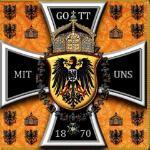
GL Karl Alexander Moyses (1882–1960)
Deutschritter replied to Deutschritter's topic in Austro-Hungarian Empire
Just got it ... thanks so much, Christian!!! -

GL Karl Alexander Moyses (1882–1960)
Deutschritter replied to Deutschritter's topic in Austro-Hungarian Empire
I would love that, Christian! Thank you! I will send you my e-mail address as a personal message. I am interested in officers, especialy generals ... generals of Austria transferring to the Wehrmacht of Großdeutschland must have been like an adventure. There's something exciting in terms of military history about the idea. Best wishes, Andreas -

GL Karl Alexander Moyses (1882–1960)
Deutschritter replied to Deutschritter's topic in Austro-Hungarian Empire
Thank you very much, Christian! Your last document was very important. I just noticed, Stefanie Theresia Adele Oppelt, widow of Eduard Friedrich Alois Schotek (not Schodek), was born 1886, not 1881. Here I have him with Generaloberst Walther von Brauchitsch on 21 June 1938 (Kriegsschule Wiener Neustadt). Moyses was a 2 m man, he therefore always "stood out". The small gentleman (handshake) is Lieutenant Colonel Dr. Friedrich Franek (later Lieutenant General). -

GL Karl Alexander Moyses (1882–1960)
Deutschritter replied to Deutschritter's topic in Austro-Hungarian Empire
Thank you so much, Christian ... I seem to have gotten a lot wrong. So he was never married to Edith Dinstel? He entered on 18 August 1902 (k. u. k. Pionier-Bataillon Nr. 13) and was promoted on 1 September 1902 ... and of course the picture ... I already had a bad feeling (because of the EK I). Do you happen to have one? Once again, thanks! Andreas P.S.: Which date and unit is correct: 01.09.1902 Kadettoffiziersstellvertreter (PB 14) or 18.08.1902 als Kadettoffiziersstellvertreter aus Pionierkadettenschule Hainburg zum PB 13 Thanks! -
Gentlemen, this is what I have put together for Karl Moyses, if anyone can fill in any blanks, that would be great. Thanks! b. 3 October 1882 d. 8 (or 9?) May 1960 I ∞ (??) Edith Dinstel (??-??) II ∞ Vienna 15 September 1953 Stefanie, widowed Schodeß, née Oppelt (??-??) 15 March 1938 to 30 September 1938 or 10 November 1938 Delegated with the leadership (mit dem Kommando betraut) of the Theresian Military Academy (reclassified as Kriegsschule on 6 April 1938) 18 August 1902 Officer Candidate (Fahnenjunker???) 1.11.1903 Leutnant (2nd Lieutenant) ??.??.???? Oberleutnant (1st Lieutenant) ??.??.???? Hauptmann 1.1.1920 Major 27.6.1923 Oberstleutnant (Lieutenant Colonel) 25 or 28.6.1934 Oberst (Colonel) 1.1.1938 Generalmajor (Major General) 15.3.1938 Generalmajor (Wehrmacht) without RDA ... 1938 received Rank Seniority (RDA) from 1.8.1936 1.4.1939 Charakter als Generalleutnant (Honorary Lieutenant General) 1.2.1941 Generalleutnant (Lieutenant General) 1908 Jubilee Cross ... awarded for the anniversary of Emperor Franz Josef accession to the throne of the Habsburg Empire. Bronze Military Merit Medal on the ribbon of the Military Merit Cross with Swords Silver Military Merit Medal on the ribbon of the Military Merit Cross Military Merit Cross (Austria-Hungary), III. Class with War Decoration and Swords (ÖM3K⚔) Bronze Medal for Services to the Austrian Red Cross in 1915 awarded by Archduke Franz Salvator of Austria Austrian Order of the Iron Crown, Knight III. Class with War Decoration and Swords (ÖEK3K⚔) Karl Troop Cross (Kaiser-Karl-Truppenkreuz) Iron Cross (1914), 2nd Class ... it could not be determined whether the 1st Class Iron Cross (picture) was awarded in WWI or WWII. Gallipoli Star (Eiserner Halbmond; TH) Order of the Medjidie Military Service Badge for Officers, 2nd Class Austrian War Commemorative Medal (Österreichische Kriegserinnerungsmedaille) with Swords Austrian Order of Merit (1934), Knight's Cross Military Service Badge for Officers, 1st Class on 18 August 1937 Honour Cross of the World War 1914/1918 with Swords Wehrmacht Long Service Award (Wehrmacht-Dienstauszeichnung), 4th to 1st Class (25-year Service Cross)
-

heer Eben, Hubert
Deutschritter replied to hucks216's topic in Germany: All Eras: Signature Database
What a great picture! He was the son of Otto Ferdinand Eben, who commanded the Düsseldorf Reserve-Infanterie-Regiment Nr. 39 as Lieutenant Colonel in WWI, was later promoted to Colonel and appointed commander of the 6. Infanterie-Brigade in 1918, the regiment, with among others Captain Carl Britt, was taken over by Lieutenant Colonel Ludwig Theodor Wilhelm Schniewindt (1868–1938). Colonel Eben fell severly ill at the Eastern Front and died on 23 July 1918 in military hospital. Hubert married Ilse Freiin von Hammerstein-Equord in 1922, the would have four children (3 sons, 1 daughter) and own the Rittergut Linde, Kreis Pyritz. Ilse was the oldest daughter (of three) of Generalleutnant z. V. Günther Edmund Wilhelm Freiherr von Hammerstein-Equord. -
Gentlemen, this is what I have on Hugo Gustav Georg Pohlmann (7 October 1861 – 29 July 1946), any corrections or additions (maybe exact dates), as always, very welcome: c. Autumn 1883 Sekonde-Leutnant (2nd Lieutenant) with Patent from 11 March 1882 18.11.1890 Premier-Leutnant (1st Lieutenant) 15.2.1896 Hauptmann (Captain) 27.1.1906 Major 1.10.1912 Oberstleutnant (Lieutenant Colonel) 5.9.1914 Oberst (Colonel) 22.3.1918 Generalmajor (Major General) 27.8.1939 Charakter als Generalleutnant (honorary Lieutenant General) Prussian Centenary Medal 1897 (Zentenarmedaille) Red Eagle Order (Roter Adlerorden), 4th Class (PRAO4/PrA4) Schaumburg-Lippe House Order (Fürstlich Schaumburg-Lippischer Hausorden), Officer's Cross of Honour (SLH.O) Prussian Long Service Cross for 25 years (Königlich Preußisches Dienstauszeichnungskreuz) in 1907 Order of the Crown of Romania (Orden der Krone von Rumänien), Commander (RumK3) Prussian Order of the Crown (Kronenorden), 3rd Class (KO3) The Most Noble Order of the Crown of Siam (Orden der Siamesischen Krone), Commander's Cross (SK3) Iron Cross (1914), 2nd and 1st Class Ducal Saxe-Ernestine House Order (Herzoglich Sachsen-Ernestinischer Hausorden), Commander's Cross 1st Class with Swords (HSEH2a⚔/HSH2a⚔/E23a⚔) Princely Schwarzburg Cross of Honor, 1st Class with the Crown and Swords (SEK1mKr⚔) Prussian Order of the Crown, 2nd Class with Swords Wound Badge (1918) in Black Pour le Mérite on 4 October 1918 as Major General Honour Cross of the World War 1914/1918 with Swords
-
These ranks are also known with the Kriegsmarine. They would enter the Maschinistenlaufbahn as a "Heizer", be promoted to Oberheizer (Gefreiter) after a year and Stabsheizer (Obergrefreiter) after two. These were followed by the NCO ranks of Maschinenmaat, Obermaschinenmaat/Maschinenobermaat, Maschinist and Obermaschinist (Oberfeldwebel), or, like Ritterkreuzträger Heinrich Dammeier, to Stabsobermaschinist. Some, that started that way, could even make the jump to Leutnant (Ing.) or Oberleutnant (Ing.), like Ritterkreuzträger Hans Johannsen.
-
This is what I have for Karl Maximilian "Max" Joseph Gustav Freiherr Schacky von Schönfeld (15 June 1842 – 26 August 1925), any additions or corrections very welcome: On 8 March 1889, Freiherr Schacky von Schönfeld was delegated with the leadership of the 1. Chevaulegers-Regiment Kaiser Nikolaus von Rußland and was appointed commander on 30 October 1889. On 10 February 1890, he was appointed commander of the 1. Schweres Reiter-Regiment "Prinz Karl von Bayern". From 18 August 1891 (until his promotion to colonel delegated with the leadership?) to 16 December 1899, he was commander of the Royal Bavarian 1. Kavallerie-Brigade in Munich. He was, at the same time (1895), delegated with the leadership of the Inspection of Military Penitentiaries. Since 1894, he was also a Royal Bavarian Chamberlain (Königlich Bayerischer Kämmerer). On 17 December 1899, he was placed at disposal (z. D.) with the statutory pension. ??.??.???? Junker 20 May 1863 Unterlieutenant (2nd Lieutenant) 5 July 1866 Oberlieutenant (1st Lieutenant) 22 June 1876 Rittmeister 1 December 1886 Major ... later with Patent from 24 September 1886 30 October 1889 Oberstleutnant (Lieutenant Colonel) 18 September 1892 Oberst (Colonel) 17 July 1896 Generalmajor (Major General) 17 December 1899 Generalmajor z. D. (de facto retired) 18 June 1914 Charakter als Generalleutnant (Honorary Lieutenant General) with the title of "Excellence" Bavarian Army Memorial Cross 1866 (Armee-Denkzeichen 1866) Iron Cross (1870), 2nd Class in April 1871 War Commemorative Medal of 1870–1871 (Kaiserliche Kriegsdenkmünze 1870/71; KD70/71) in Bronze Order of Saint Michael (Bavaria), Knight's Cross 1st Class in 1883 Bavarian Long Service Cross (Königlich Bayerisches Dienstauszeichnungskreuz), II. Class for 24 years (BD2) Order of Merit of the Bavarian Crown, Knight's Cross Austrian-Hungarian Imperial Order of Leopold, Commander (ÖL2) Prussian Order of the Crown (Preußischer Kronenorden), 2nd Class (PK2) Russian Order of Saint Anna (St.-Annen-Orden), II. Class (RA2) Royal Order of Francis I, Commander's Cross 2nd Class (ScF2b) Anniversary Oak Leaves (Jubiläums-Eichenlaub „25“ 1870/1895) to his Iron Cross (1870), 2nd Class Prussian Centenary Medal 1897 (Zentenarmedaille) Order of Saints Maurice and Lazarus, Grand Officer's Cross (IMuL2a) Order of the Griffon (Mecklenburg), Grand Officer's Cross (MSchG2a/MG2a) Red Eagle Order, 2nd Class (PrA2) Military Merit Order (Bavaria), Grand Commander's Cross on 17 December 1899 (later reclassified as 2nd Class with Star) Anniversary Medal for the Army 1905 (Jubiläums-Medaille)
-
You are absolutely right! He brought the Dreyse needle-gun to the attention of General Karl Ernst Job Wilhelm von Witzleben in Berlin and the Minister of War General Karl Georg Albrecht Ernst von Hake. Major Priem in 1838 at an audience with the Crown Prince, later King Friedrich Wilhelm IV: "Your Royal Highness, 60,000 men armed with this rifle under the leadership of a talented general and His Majesty the King will be able to determine where Prussia's border should be." He was the father of Georg Albert von Priem (1850–1920), German Colonel, Princely Schwarzburg-Rudolstadt Chamberlain and Chief Court Marshal and grandfather of Georg Ernst Karl Ludwig von Priem (1883–1944), German officer, finally Major General of the Wehrmacht in WWII.
-
https://www.emedals.com/products/germany-imperial-a-collection-of-documents-to-major-erich-anderson-g49775rl1 This could very well be the Major z. V. Anderson who received the Gold Medal of the Grand Imperial Order of the Red Arrows on 19 September 1941. Promoted to Oberstleutnant on 1 June 1942 (?). Married since 1913 to Anna Julie Gertrud Peisker (?).
-
Gentlemen, this is what I have for Generalmajor (Charakter) Georg Heinrich von Priem, any additions or corrections (especially promotions; Fähnrich???), as always, sincerely appreciated: 1 June 1813 (???) Secondlieutenant (2nd Lieutenant) Mid-June (???) 1815 Premierlieutenant (1st Lieutenant) 28 November 1820 Capitän (Captain) 30 March 1834 Major 30 March 1844 Oberstleutnant (Lieutenant Colonel) 27 March 1847 Oberst (Colonel) 6 April 1852 Charakter als Generalmajor (Honorary Major General) Iron Cross (1813), 2nd Class Prussian War Commemorative Medal for the Wars of Liberation (Kriegsdenkmünze für die Befreiungskriege) Red Eagle Order (Roter Adlerorden), 4th Class (PRAO4/PrA4) Prussian Long Service Cross for 25 years (Königlich Preußisches Dienstauszeichnungskreuz; DA) Red Eagle Order, 3rd Class with the Bow Commemorative War Medal for combatants of the campaigns of 1813, 1814, 1815 (Erinnerungs-Kriegs-Denkmünze für Combattanten der Feldzüge 1813, 1814, 1815) on 17 March 1863 Red Eagle Order, 2nd Class with Oak Leaves (neck order) on 17 September 1866 Honours Honorary Citizen of the city of Sömmerda (Province of Saxony) on 5 November 1848 Raised to the hereditary Prussian nobility on 23 June 1857
-

Heer Bismarck, Georg von
Deutschritter replied to hucks216's topic in Germany: All Eras: Signature Database
So he was already delegated with the leadership of the 20. Panzer-Division in August 1941? That is new and very interesting! Thanks!



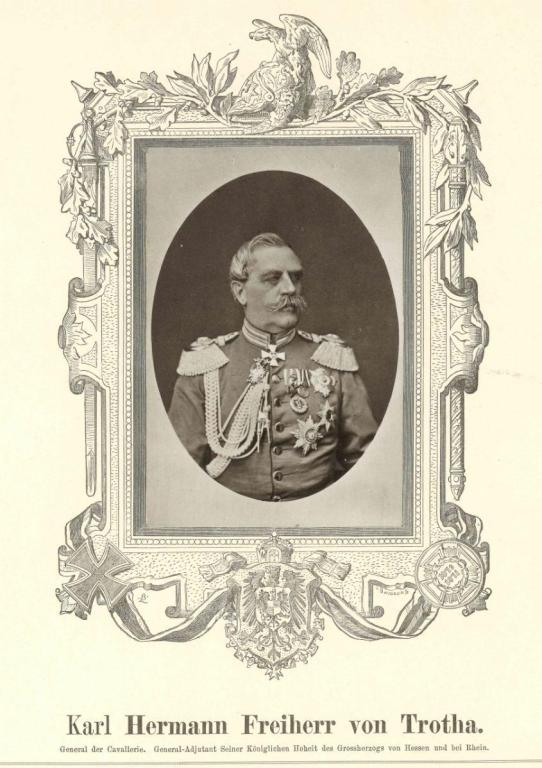

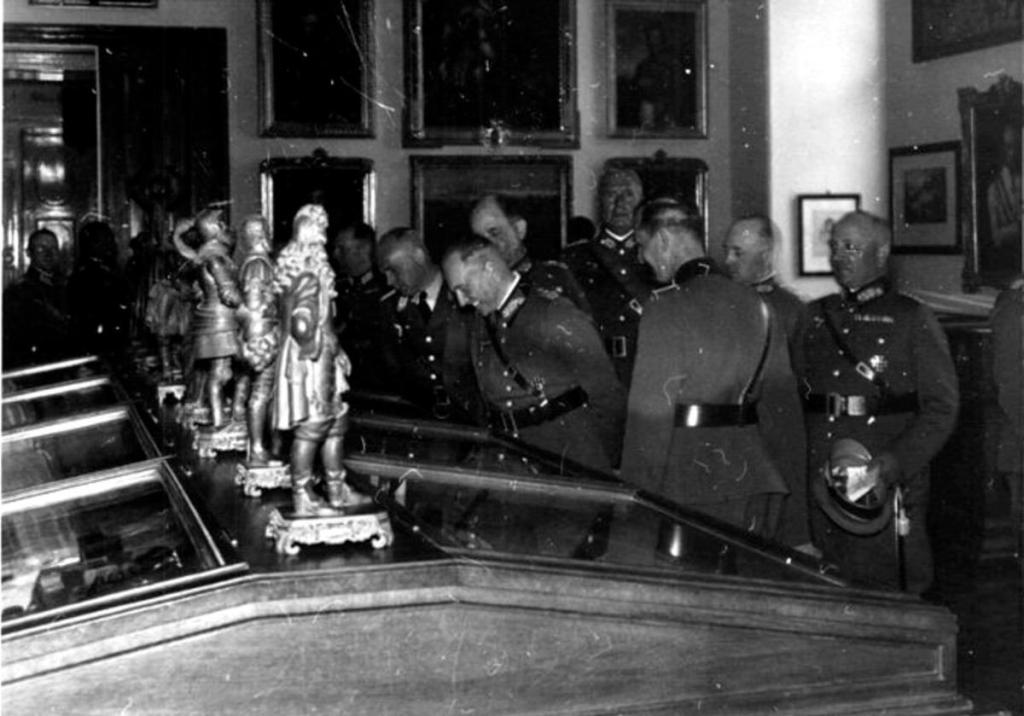
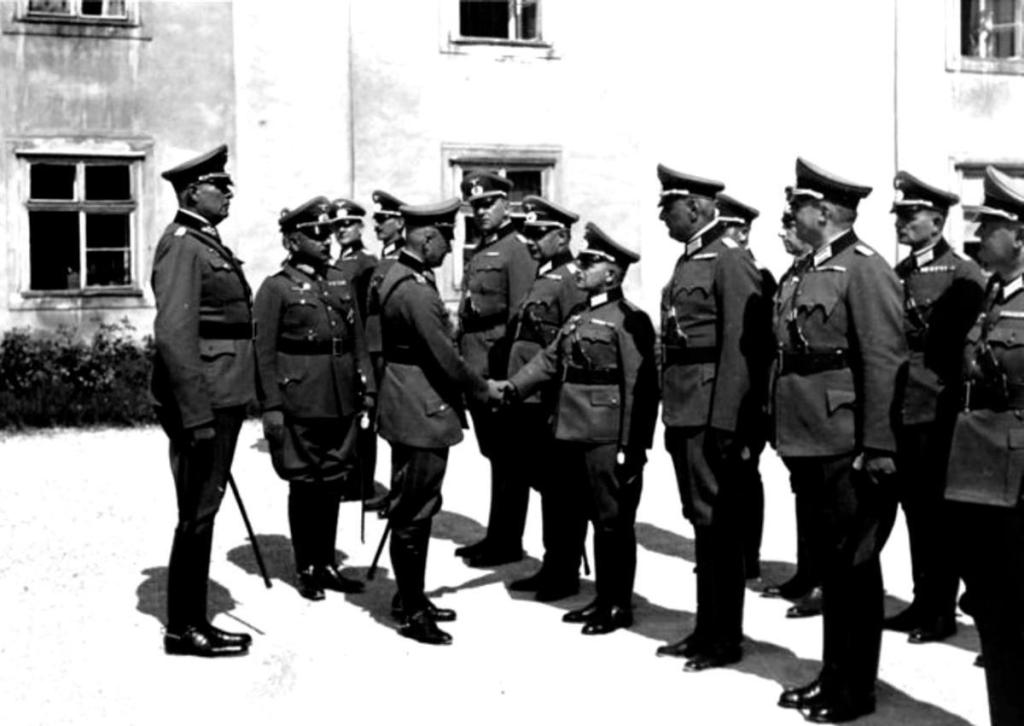
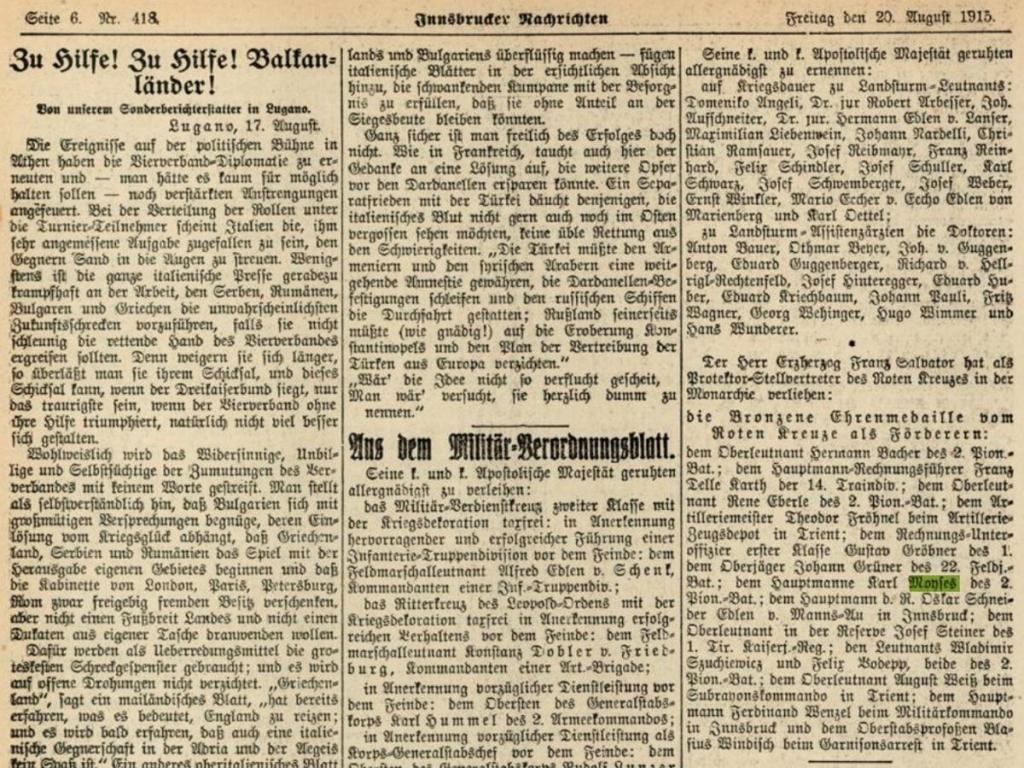

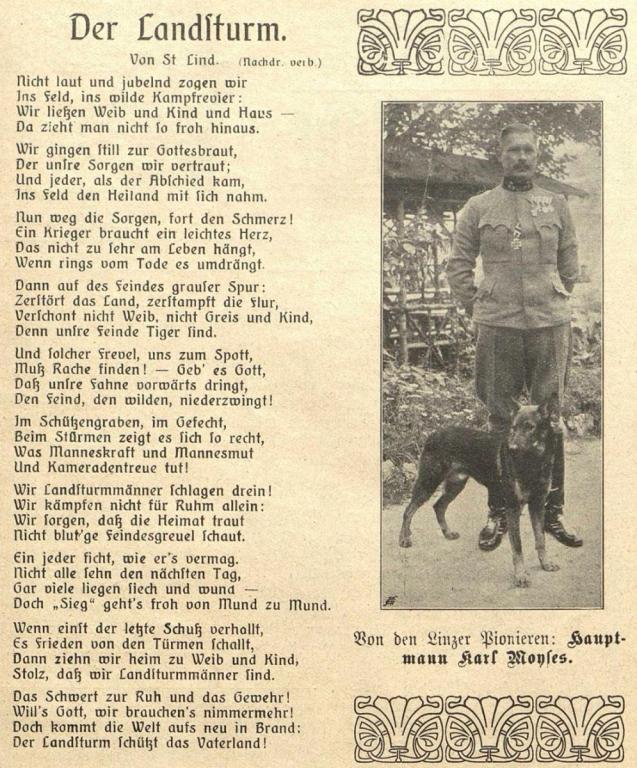
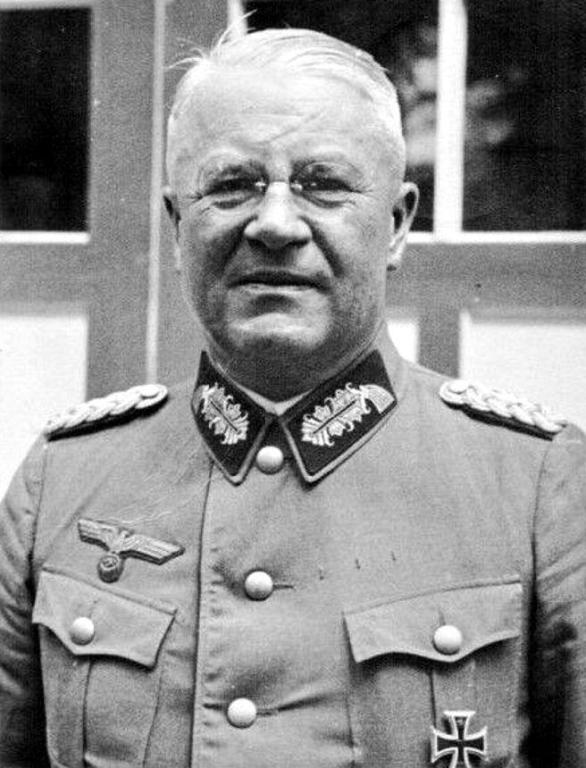
_Nr._17_im_neunzehnten_Jahrhundert.thumb.png.012498fd4bf6813a9539584d6cded22e.png)